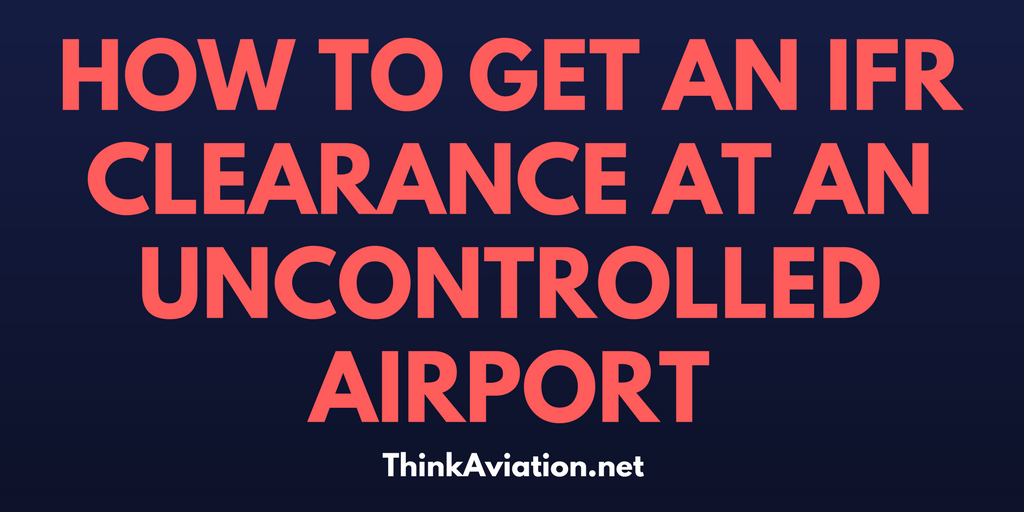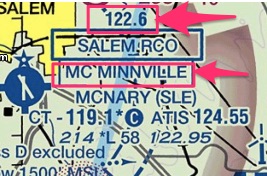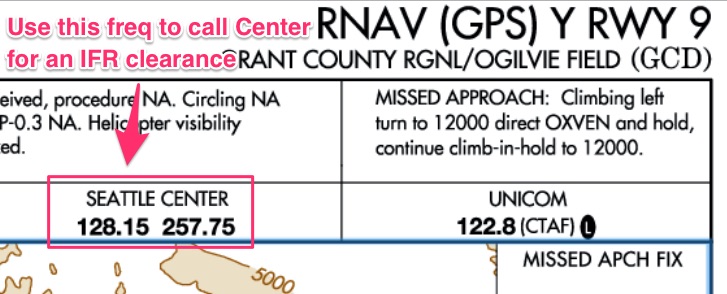Getting an IFR clearance at an uncontrolled airport can be difficult and requires a little more planning and effort than at towered airports.
Unfortunately, there is no way around it because every IFR pilot will run into this situation at some point especially if you fly out West.
I broke this article up into two separate blog posts:
- How to Pick Up an IFR Clearance at an Uncontrolled Airport
- How to Pick Up an IFR Clearance in the Air
Which option you choose depends on four things:
- The radio and cell phone reception on the ground
- The weather
- ATC’s radar and radio reception in the air
- Your emotional maturity
As a military pilot, we are strongly encouraged to takeoff with a clearance, so I get it on the ground before I take off when I can.
I think this is a prudent course of action because it frees you up to enter the clouds from the moment you take off, but I am biased. I like to be safe.
I have heard horror stories of pilots taking off and barely maintaining VFR cloud clearance. I can’t imagine being that stupid.
If you are a prudent pilot, the reception is good, then get the clearance on the ground when possible. If you can’t, then check out this article I wrote on how to pick up an IFR clearance in the air.
How to get a clearance on the ground
Please understand a few things before you choose this option:
Getting a clearance on the ground is tricky because of void times.
Don’t give FSS an expected takeoff time unless you really mean it.
You do NOT want to run past your void time because you have to start all over and you have hurt arriving IFR traffic.
Remember, ATC is holding up IFR traffic into that airport until you have taken off.
IFR and Special VFR traffic CANNOT land at your airport until you have taken off. That includes everyone from a little Cessna to a 747.
Respect the void time and understand the landing restrictions you are placing on your fellow pilots.
You have three options when getting your clearance on the ground.
Option #1: Call FSS over the radio
This choice is the standard method.
You can find the appropriate FSS frequency by looking at your sectional:
Remember, unlike departure, center, and approach, the Flight Service Stations require an initial wake-up call that goes like this:
“McMinnville Radio, Cessna 12345 at Salem Airport, Sierra-Lima-Alpha on one twenty-two point six.”
They have multiple frequencies and airports they cover. You need to tell them which frequency you are on so they can switch their radio to the one which will reach you best.
In my experience it takes a few times to wake them up, so don’t be surprised if this happens. Give them a call again.
Once they have a chance to put their coffee down you will hear and acknowledgment. Now you can give them the full request:
What to say to FSS when picking up your IFR Clearance:
- Your current location: spell it out phonetically (ie alpha, bravo, tango etc)
- Your request: IFR clearance
- Your destination airport: spell it out phonetically
- Departure runway
- When you will be ready to depart: you better have an accurate time!
So the radio call sounds like this:
“McMinnville Radio, Cessna 12345 is at Salem Airport, Sierra-Lima-Alpha, and I would like to pick up my IFR clearance to Dagget Barstow Airport, Delta-Alpha-Golf, we are ready for takeoff now on runway 31.“
Don’t beat yourself up if you have to repeat some or all of this call.
Every time I call, even though I tell them which runway I want and that I am ready NOW, they always seem to ask me for “runway” and “departure time.” I can’t stand FSS for this very reason.
Which is why the next two options may work better:
Option #2: Call FSS over the phone to pick up your clearance
I actually prefer to call FSS over the phone vs the radio when I’m in the aircraft because it takes 10 radio calls to get my message heard and acknowledged by FSS.
A phone conversation works better when FSS asks you the same question three times.
If I do call with a cell phone, then I will do it when I am already taxing and have my run-up checks complete. Yeah, it will get a little loud trying to talk to them, but you won’t miss your void time.
Use this universal number to call. Put it in your cell phone!
1-888-766-8267
Be careful because your aircraft may be too loud do use this option. Test it out on a friend before you try this for real.
If it is too loud to talk on the cell phone in your aircraft, there is no cell coverage and/or you can’t reach FSS on the radio, you will need to call them before you crawl into the aircraft.
You need to understand something before you take this route. They are going to give you void time. You must take off before the void time or you will have to call them back and get a new void time. It won’t be more than about 5 minutes.
So don’t call if you haven’t finished your preflight.
You need to pay attention to how long it takes to do your run-up and taxi out. Time yourself over many flights. Use that number to estimate your takeoff times when you call for a clearance.
If you are too quick then you MUST wait at the end of the runway until you get within your window of time. Or if you weren’t quick enough then you are going to have to call again and get another void time.
Option #3: Call Center on the radio on the ground (if they aren’t too busy)
Twice I’ve run into a situation where FSS couldn’t get the clearance from Center in a timely manner, but we didn’t want to take off without a clearance.
We sat and waited
And we sat some more.
Finally, the FSS told us they couldn’t get in contact with LA Center, but that we could just call Center on the ground or call them in the air. We decided we needed to go, so we took off an picked up our IFR clearance in the air.
Please know this isn’t always the case at every airport. Sometimes Center doesn’t like people picking up their clearance on the ground (or in the air). They would rather you get it from FSS then call them in the air after you have the clearance.
If it is possible to reach Center on the ground, it’s perfectly acceptable to bypass FSS and go straight to Center if the situation demands it, but…
You should start with FSS when you have good reception on the ground, but if it doesn’t work, know that you can plug in the Center or Departure frequency and get it that way.
You can find the Center or Departure frequency on any of the approach plates or any standard instrument departure for that airport.
Before you give Center a call, though, make sure they aren’t too busy. They are doing you a huge favor by taking the request on the ground.
So those are your three options for picking up a clearance when the tower is closed or there isn’t a tower.
If you can’t get it on the ground, check out my article on how to get an IFR clearance in the air.
If you have never gotten a clearance from FSS, try it. It is a pain and every IFR pilot should experience it so they can figure out their preferred method.
Additional Information
FAA publishes clearance delivery phone numbers
Hey! One more thing! Did you like this article? Do you want more great tips and tricks?
If so, sign up below for your FREE Ultimate Guide to Decoding NOTAMs.
You’ll also get weekly emails with more tips and tricks to help you become a better pilot.


